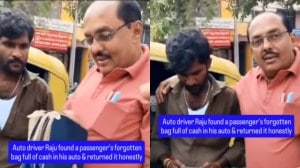So that crime doesn’t pay
Last week’s activity with regard to the actions of the Municipal Corporation of Delhi, on enforcing municipal laws in the city as direc...

Last week’s activity with regard to the actions of the Municipal Corporation of Delhi, on enforcing municipal laws in the city as directed by the court, has thrown up an interesting sequence of reactions by the Delhi’s legislature and government. It has also cleared the air on issues concerning the relationship between the state and the central government — which is supposed to make law and implement it. Now that the central government has made it clear that it will not intervene in the MCD’s processes of obeying the high court’s orders, and also now that the Supreme Court has refused to accept any appeal against the high court’s orders, perhaps this is the right time for Delhi Chief Minister Sheila Dikshit to “think out of the box”, and find ways to defang the mafia which seems to run the Capital.
Here are some actions Dikshit could execute, some immediately, and some that may take a little more time. First, she needs to order that the 18,271 illegal properties which are the subject of the list submitted to the Delhi High Court be barred from any sale or purchase transactions. This is completely within the jurisdiction of her government, and needs no clearance from the Centre, as it is a revenue matter. The logic is simple — if there is a municipal illegality in the property, why should it be trade-able. As we were taught in school, it is illegal to buy a stolen thing, and the person who buys stolen goods is also guilty of the crime, apart from the thief.
Such an order would immediately alert the public, so that no law abiding citizen buys illegal property. Such an order would also be simple to execute, and would not require cumbersome processes. Delhi has 13 sub-registrars, each having a geographically defined jurisdiction. Sales and purchases of properties located in each territory can be registered only in the territory allocated to the specified sub-registrar. So, even if were to assume that the 18,000-odd admittedly illegal buildings are spread out equally across the 13 zones, that would mean a list of about 1,500 properties only per SR office. This is a manageable number. Simultaneously, the list should be made public on the internet, with all the necessary options — colony wise, zone wise, ward wise, and so on. Transparency is the first pillar of democracy, and with the Right to Information regime in place it will not be long before this list is available at just a click away.
The second action the CM could take is to begin a process of DEMAT-ing property records and ownerships. Again, the advantages are tremendous: all records of sale and purchase, as well as of use (legal or illegal), and of municipal taxation, would be available to both the government and the public at large at the click of a button. Why should property ownerships be hidden behind layers of secrecy and paper, when the entire share and stock market has accepted the DEMAT system? Such a project is child’s play today, given the country’s prowess and skill with hardware and software. This proposal is not a crazy utopian idea — there are now districts in Haryana which have put their entire land records and land revenue information, including the minutest details about each acre of land, on the web. Try jamabandi.nic.in to see the beginnings of a different kind of electronic revolution taking place in rural India!
The third action which the CM must take (if she is serious about controlling corruption) is to start working on finding out how illegal her state is post-2001. I am saying this because the 18,271 properties on the list are valid only up to 2001 — many more illegal buildings have been added on to the infamous list since then. In fact the last five years has been the period when the most brazen illegalities have taken place. Dikshit must sense the mood of the judiciary before the courts make their next move and force compliance of the laws. Neither the courts nor the executive can afford to allow the Capital to descend into chaos, and these orders are just the harbingers of more stormy times if the government does not respond now.
Finally, stop depending on a machinery which has proved itself to be rotten. The MCD has done just that. Use other, out-of-the-box ways of finding out how much illegal building stock exists in the city. Again, this is not a difficult task. There are 134 wards in Delhi, and as many private survey agencies who can give us the answer in a month if we were to go about it seriously and efficiently. Let the MCD do the work of cleaning up the mess it has created — let someone else do the job of identifying the problems and suggesting solutions. Do not depend on the MCD any longer. The CM has two more years to the next elections. Enough time to become ‘Mrs Fix it’ if she has the political will — and some innovative ideas.
The writer, an architect, is part of a team drafting Delhi’s building bylaws



- 01
- 02
- 03
- 04
- 05




























